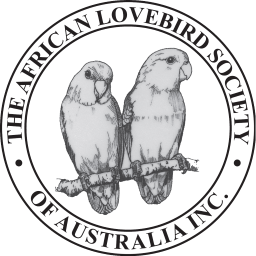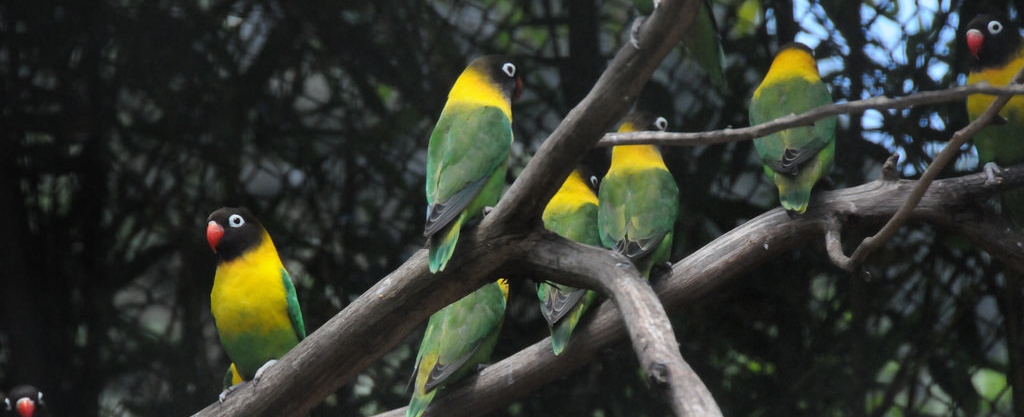Normal Masked Lovebird
Agapornis Personata
Size 150mm
The Masked Lovebird ,occurs in Northern and central Tanzania ,to the south of the Region inhabited by the Fischer’s Loverbird ( A.Fischeri), it inhabits mainly savannah grassland and light timbered area’s.
The two species ranges may be separated by as little as 60 km, they are closely related species.
It feeds on mainly grass seeds and berries in the wild, nesting in tree hollows.
Current literature points to this species not being endangered.
This species of Lovebird made its way into captivity in the 1920’s, the Blue colour was also discovered in the wild and was included in the early shipments to the UK and Europe .
They made their way from there into Australia from late 1920’s/1930’s onwards, before the Australian Government import bans came into effect in 1949.
One of the most attractive ‘normal’ lovebirds with distinctively contrasting colours. The head, chin and upper throat are black to blackish with a band of bright yellow extending from the back of the neck to the lower breast. Their bellies are light green,wings are dark green, rumps green with a faint violet blue wash and tails green. Bills are bright red and the eyes have the prominent white eye ring. Feet are a bluish Grey.With nearly a dozen colour variations this species is experiencing a resurgence in popularity especially due to the work being carried out with the new ‘dark factor’ mutations. Popular Mutations are the Violet, Dilute in Green and Blue.
In some publications they are referred to as Yellow collared Lovebirds.
There are reports of feral birds occurring in some countries, mainly in Texas in the USA.
Pure normal birds are becoming rarer in Australia and should be preserved in our Aviaries.
Photo credit: Ronald Dueñas

